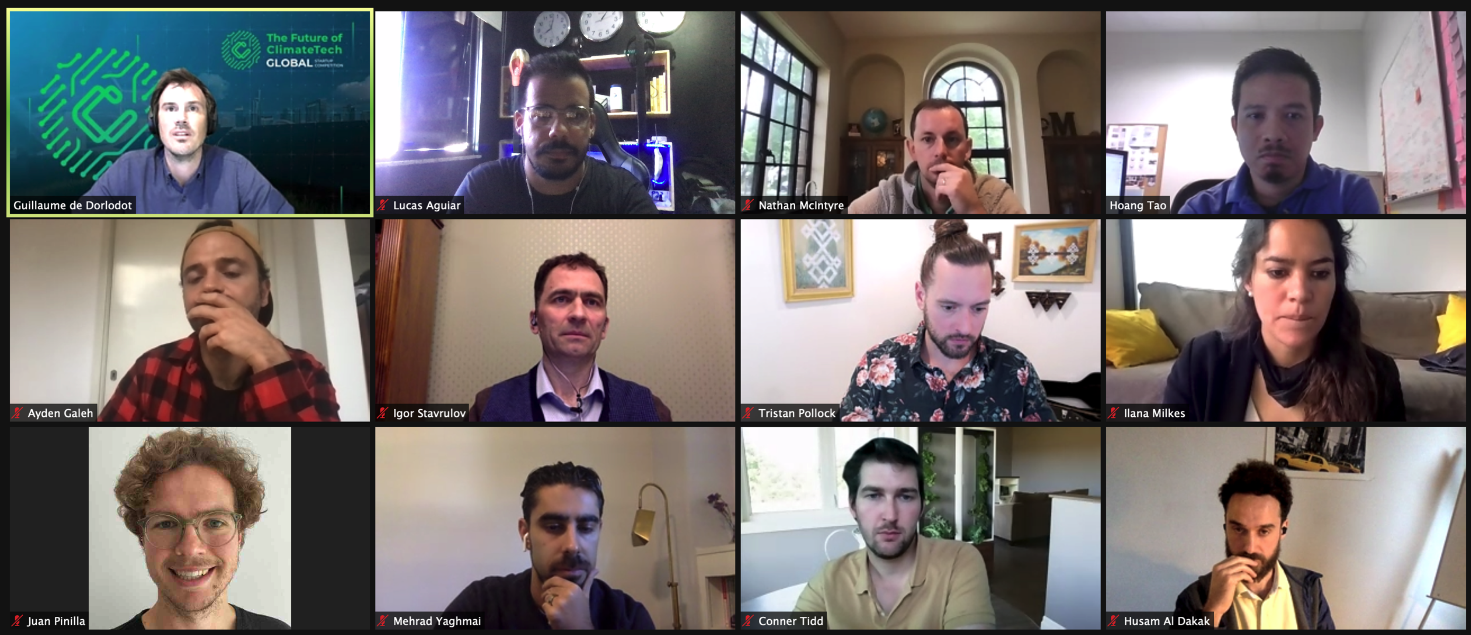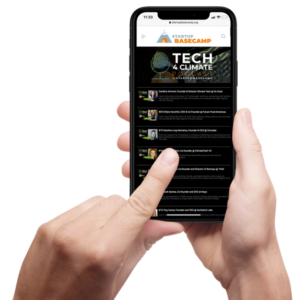Delivering a pitch virtually is an entirely new concept for many startup founders. Yet, it’s a new skill that must be learned as no in-person investor meetings are possible for now!
It might take some time to adjust to this drastic and involuntary change. However, we must embrace the new opportunity and efficiency that online pitching can offer. No time or money wasted on travel! No immigration or Visa restrictions anymore! Today, you can pitch Silicon Valley Investors from anywhere!
During this 2020 pandemic, our team at Startup Basecamp has significantly noticed how startup founders and entrepreneurs have been struggling to stay afloat. That is why we decided to put together a series of tips and tricks to help you get ready to successfully pitch online!

A: Preparing your pitch and presentation
1: Use the best technology possible but choose the right tools
There are a lot of new software tools and options out there you could use. And making a good first impression is priority. But, trying to impress your investor with a brand new software and tool that they don’t know how to use is not going to work out for you. Since the whole pitching process is online, you want to make it easy and smooth for your audience to watch and go through your presentation. Choose something that both of you can easily manage. If you’re not sure about what tools your audience prefers, you can always ask in advance! They will notice how you are taking their comfort zone into consideration!
I.e: Zoom, Google Hangouts, GoToMeeting, Webex…
Pro Tip: Ask colleagues or friends to try out what you’re going to use on your pitch and ask them to give you feedback.
2: Write down a script and prepare your pitch deck
First things first: pitching is NOT improv. As cool as it would look to have everything memorized, pitching is presenting yourself in a vulnerable way. Think about it, you’re telling your audience everything about your company and you’re asking for money.
“To help your audience get your message you’d need to write it down first. Keep a conversational pace of 130–140 words per minute, sprinkle it with pauses and at least a few ‘human moments’ to go with it.”
Make sure you sound genuine and authentic!
Pro-tip: Up to 23% of a pitch ends up being noise. Practice your script and memorize the most important factors of your pitch so you don’t waste time repeating yourself, describing something for too long, or even stuttering.
Not sure where to start your script or getting prepare for hard questions? Feel free to refer to our Silicon Valley Startup Toolkit and our list of the TOP questions VC’s will ask you.

3: Stunning visuals are fundamental
Visuals are the KEY to your pitch deck. Your aesthetic is your second most important factor to a successful pitch session, the first one is your script, of course.
Think of it as an online store. How does someone sell you their product if they can’t show it to you in person? AESTHETICS! Make sure your presentation is pleasing to the eye and easy to read. If possible, make it fun and interactive. “When you pitch online, your visuals will moreover be doing most of the talking for your company. Therefore, make sure you send presentations with top-notch design.”
Screen-sharing is also a BIG part of your presentation structure. Make sure you apply this method!
Pro-tip: Research your investor’s interests, see what are getting your investor’s attention! I.e: websites, social media, Linked In, etc.
4: Record a video
“Live pitches are hard. A momentary lag can disrupt the flow of a sentence or a technical glitch with Zoom can disable the scheduled Facebook live stream. A founder can record a short back-up video or screencast walk-through of their deck to prepare for those moments. Tools like Loom, Adobe Spark, Veed.io, Monosnap or Quicktime can get you started.” If you nail it, your video can become your pitch deck.
Pro-tip: Plan and record your video and your presentation way ahead of time. Keep in mind you’re going to spend a long time editing and rendering.

B: Get ready to Pitch
5: Prepare your environment
Before the call, make sure your environment, and, in particular, the background that will show up “on camera,” is professional. NO BACKGROUND NOISE IS TOLERABLE (pets, kids, personal belongings, politics related stuff). Test your video and audio connections, as well as your internet speed, in advance.
Pro-tip: Make sure your investor and you are on the same page in regards to the meeting platform. If miscommunication happens, you could have a nice professional background set up, a video presentation ready, when your investor decided to join by phone. Talk to your audience and prepare accordingly!
6: Be ready for technical difficulties
“Firstly, set yourself a deadline to share the documents at least an hour before the call. This takes some discipline, but makes all the difference in ensuring a smooth start to presentation. Secondly, make sure you’ve optimised the deck for file size (Keynote > File > Reduce Filesize). -Make sure you’ve asked about the client’s preferred file formats well in advance.”
-Make sure you send your presentation before you jump on the call. This way your audience knows what you will be talking about.
Pro-tip: A few minutes saved at the start of the call could make all the difference, extending the time available for feedback, questions or even fixing something that didn’t go as planned.

7- Be ready for any changes in the agenda or tough questions
Typical pitch agenda:
-Introduce yourself and your team members.
-Ask investors to introduce themselves and their fund.
-Screen share, walk through your deck and show product demo (if available).
-Be ready to answer how COVID-19 impacts your business – good or bad.
-When you are done walking through the deck, stop screen sharing.
9- Listen and follow up
Try to read your audience’s body language, even if you’re in a virtual meeting. This will give you an idea of them wanting to know more or not. Have a brief “thank you moment” at the end of the pitch. Always make sure your audience knows how appreciative you are of the opportunity they gave you. Make them feel free to ask any questions they have.
Write a short follow up email to recap your key points and action items within 24 hours. Ask if they’d like a copy of the pitch or any other document you showed in your presentation.
Pro tip: Following and interacting with investors on social media is another touch point that can help them get to know you.
Add the investor to your monthly or quarterly newsletter so they can track your progress.

10: Self-reminder:
- Do not Zoom and drive, walk or pitch outdoors on mobile.
- Fix your hair and put on a clean shirt from the waist up at least.
- Always set an agenda and share your pitch deck ahead of time.
- Prepare all the follow up materials (presentation, demo script, etc) ahead of time.
- Invest in a good wifi. Poor bandwidth leaves a poor impression.
- Find a quiet indoor Zoom meeting place where you won’t be interrupted (if possible). Turn off desktop notifications (especially messaging services).
- Only invite team members to join if they can contribute. Less is more.
- In the Zoom Video Settings dialog, click Touch up my appearance. You will look nicer.

We hope you benefit from this list. Do not forget to let us know of any other tips you think should be included! info @ startupbasecamp.org
Also, if you are looking for more fundraising resources for your startup check out our Startup Toolkit!
Thanks to Startup Basecamp’s network of Silicon Valley founders and experts we’ve been able to curate the best tools, resources, frameworks, and design a unique step by step approach to help you through each step of your startup’s adventure.
Take advantage of the tools and resources that the best Silicon Valley founders are using to save time, money, and improve productivity.








